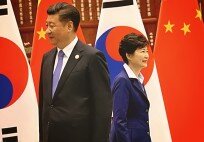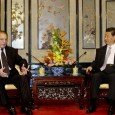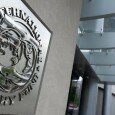By Khalid Mustafa –
All is not as well on the economic front as Ishaq Dar would have us and IMF believe
For the first time in Pakistan’s history, the PML-N government has started treating the grants as non-tax revenue – a practice unacceptable to the international financial institutions (IFIs). And it would serve nothing other than bringing opprobrium to the country when it could least afford it.
The government has basically pulled a number of fast ones to showcase that it has brought down the fiscal deficit to 2.1 percent in first half of the ongoing financial year 2013-14. And it also includes treating grants as non-tax revenue. All this has been done to bluff the International Monetary Fund (IMF) – a clever one which is not likely to work with the hard-nosed Fund guys.
According to the data available with Pique, foreign grants amounting to Rs31 billion have been treated as non-tax revenue.
According to Dr Ashfaque H Khan, Dean of Business School at NUST, the precedent set by the Nawaz government and its team of financial and economic managers headed by Finance Minister Senator Ishaq Dar is quite dangerous. Mr Khan says, perhaps never in the history of this country have we treated foreign grants as non-tax revenue.
Grants have always been treated as a separate item and the IMF has always used budget deficit excluding grants as a real deficit of the country.
Clever ploys
How has the present government managed to control and lower the deficit in its first six months of the current fiscal?
It is a rather elaborate tale. It all commenced with, first, the government paying Rs342 billion to the IPPs to clear the Rs480 billion circular debt in June 2013. This figure was posted as an expenditure item in the 2012-13 fiscal, thus quite cleverly pushing the fiscal deficit in the last year of the Zardari regime to a whopping 8.8 percent. On July 22, 2013, the government paid out the remaining amount of Rs138 billion to the IPPs. Did this Rs138 billion appear on the expenditure side in 2013-14? No, it didn’t.
Dr Ashfaque Khan says, he could not find such a large amount on the expenditure side and posed a question, asking the government to explain this puzzle?
The data also shows that the Universal Services Fund of the Pakistan Telecom Authority, amounting to Rs68 billion, was also treated as non-tax revenue. How can years of accumulated amount, meant for the infrastructure development of cellular companies, be brought under federal consolidated fund and treated as non-tax revenue?
Novel methods
The Nawaz government has also adopted a ‘novel way’ to show GDP growth at a remarkable 5.1 percent in first quarter of the ongoing fiscal, and tried to befool the IMF that the economy had started gaining momentum.
Everyone who has even rudimentary knowledge of how economies work will tell you: it takes time for an economy to collapse and likewise it also takes time for it to improve. But in Pakistan’s case, the portrayal of out-of-the-blue improvement has been a shock for many who know the business.
An economy always goes on the mend because of sound economic policies, not through statistical gimmickry and figure fudging.
The Pakistan Bureau of Statistics (PBS) has not done any good to its already tainted reputation, something it earned over the years, by supplying flattering growth indicators through figure fudging.
Instead of addressing these issues by forming a high-level committee, Dr Khan says, the government dropped yet another bombshell by leaking quarterly estimates of GDP which suggested that it has grown by 5.1 percent in the first quarter (July-September) of the current fiscal year. No one knows how the PBS calculated these numbers. No competent authority (the National Accounts Committee) has approved these figures. No technical committee was formed to vet these statistics.
An advisor to federal finance ministry and DG Debt during the Musharraf regime, Dr Khan says, the factual position is that the PBS had initiated the exercise of measuring quarterly data on an experimental basis. “The idea was to estimate quarterly GDP for three/four quarters and then compare it with the annual number at the end of the fiscal year – to have a measure of confidence on their measurement ability.”
Unbelievable numbers
The PBS never intended to release the numbers since this was an experiment in progress. Yet somehow these numbers found their way to the media. Since the first quarter numbers appeared ‘impressive’, the political leadership just grabbed these numbers and started flaunting the success of its economic policies.
But when economists started challenging these numbers, the finance minister in the Economic Advisory Council meeting categorically stated: “I don’t own this number but at the same time I don’t disown this number”.
Yet in what indeed was an alarming development, the State Bank of Pakistan accepted these statistics when it stated that the economy had grown by 5.1 percent in the first quarter of the current fiscal year. The million dollar question is, whether the government exerted pressure on the central bank to back the rosy statistic?
Later, the PBS has also released numbers pertaining to large-scale manufacturing for the first half of the fiscal year having registered an impressive 13.2 per cent growth in December 2013 and 6.8 per cent during the first half of the fiscal year.
Some of the numbers released by the PBS are simply unbelievable. For example, the production of diesel was up by 94 percent, sugar production registered a growth of 78 percent, deep freezers and air conditioners grew by 115 percent and 116 percent respectively, and billets/ingots was up by 27 percent. There are many other idiosyncratic growth numbers pertaining to large-scale manufacturing reported by the PBS.
Such wizardry
Can anyone believe that sugar production was up by 78 per cent? That would mean that the country has now been flooded with sugar. Few items (sugar, diesel, deep freezers, air conditioners, billets etc.) with their fictitious growth and with their relative weights in large-scale manufacturing appear to have contributed over five percentage points in large-scale manufacturing growth.
This fictitious growth aside, the large-scale manufacturing appears to have grown by 2.8 per cent in the first half of the current fiscal year.
One long-term negative fallout of such wizardry is that everybody is likely to take with a pinch of salt whatever numbers the PML-N government throws up. The huge credibility gap that the economic team is hell-bent on spawning now to pat itself on the back may thus to come back to haunt it.
The writer is a journalist based in Islamabad































































































